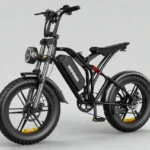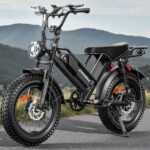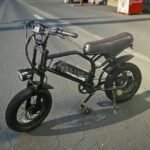![Ride Anywhere on a Budget: The 5 Best Fat Tire E-Bikes Under $1,000 for ([year] Guide) Best Fat Tire Electric Bikes](https://goebikelife.com/wp-content/uploads/2024/04/Best-Fat-Tire-Electric-Bike.jpg)
Top 3 Picks — Best Fat-Tire E-Bikes Under $1,000
Our quick verdicts: the best all-rounder, the best value, and the most power under a grand.
![Ride Anywhere on a Budget: The 5 Best Fat Tire E-Bikes Under $1,000 for ([year] Guide) TST R002 — 20×4.0 moped-style fat-tire e-bike](https://goebikelife.com/wp-content/uploads/2024/04/TST-R002-EBike-1.jpg)
TST R002 — Balanced Performer
- 1500W peak + 90 Nm torque for punchy hill starts
- Hydraulic discs & full suspension for control
- App support & 65–100 mi claimed range options
![Ride Anywhere on a Budget: The 5 Best Fat Tire E-Bikes Under $1,000 for ([year] Guide) Jasion RetroVolt — retro moped-style 20×4.0 fat-tire e-bike](https://goebikelife.com/wp-content/uploads/2024/04/Jasion-RetroVolt-EBike.jpg)
Jasion RetroVolt — Retro Cruiser
- 1200W peak + 48V 13Ah battery
- Full suspension + 20×4.0 tires
- UL 2849 system compliance
![Ride Anywhere on a Budget: The 5 Best Fat Tire E-Bikes Under $1,000 for ([year] Guide) Aipas M1 Pro — 26×4.0 full-suspension fat-tire e-bike](https://goebikelife.com/wp-content/uploads/2024/04/Aipas-M1-Pro-EBike.jpg)
Aipas M1 Pro — Power & Range
- 1800W peak + 110 Nm torque
- 48V 17.5Ah battery, claimed up to 85 mi
- 26×4.0 tires, full suspension chassis
Fat-tire e-bikes are the Swiss Army knives of cycling: they float over potholes, chew through gravel and sand, and turn rough city streets into a magic-carpet ride. The good news? You don’t need to spend $2,000+ to get into the game.
In this guide, I narrowed the field to the five best fat-tire electric bikes you can buy for $1,000 or less—prioritizing ride quality, component value, safety, and long-term ownership.
You’ll find clear recommendations for different rider profiles (commuters, trail dabblers, moped-style fans, retro-style lovers, and budget hawks), a concise spec snapshot for each bike, and zero-nonsense advice on motors, batteries, brakes, certification, and local e-bike laws.
How I Chose These Bikes (and what “under $1,000” really means)
Selection criteria
- Street price ≤ $1,000 at the time of writing or routinely discounted below $1,000 via sales.
- Fat tires (3.0–4.0 in.) for stability and comfort.
- Usable range and power for day-to-day riding (at least 10Ah battery + 500W+ nominal motor; some list higher peak outputs).
- Brakes that match speed/weight (hydraulic preferred; mechanical acceptable if well tuned).
- Brand ecosystem & support (warranty, manuals, parts availability).
- Safety & compliance emphasis (UL listings where available; realistic rider guidance on speed/class).
A quick word on U.S. e-bike classes
- Class 1: Pedal assist only, motor cuts at 20 mph.
- Class 2: Throttle and/or pedal assist, motor cuts at 20 mph.
- Class 3: Pedal assist only to 28 mph (some states allow throttle, others do not).
Always check your local rules before enabling higher-speed modes.
About safety certifications (UL 2849)
UL 2849 is the gold-standard systems safety certification for e-bikes in the U.S., covering the battery, charger and drive system together. Look for UL 2849 (and, for batteries, often UL 2271) in product listings, on bikes/batteries, or in documentation. It’s increasingly required by cities and workplaces.
The Shortlist (Best Picks Under $1,000)
- Best Overall Value: Aipas M1 Pro — 26×4 fat tires, long-range battery, confidence-inspiring ride, frequent sub-$1,000 sale price.
- Best Moped-Style: TST R002 — full-suspension moped-style with 20×4 tires, hydraulic brakes, and legit punch. Often $899–$999 depending on battery option.
- Best Retro-Style Cruiser: Jasion RetroVolt — throwback look with fat tires, dual suspension, and a strong value package around the $700 range on sale.
- Best “Spec-for-Dollar” Wildcard: Ridstar Q20 — head-turning numbers for the money; just mind your local compliance rules and seller shipping fees.
- Best Big-Wheel Fat Tire: Jasion EB5 Max — 26×4” tires with 750W nominal/1500W peak and a 48V 15Ah pack—excellent for taller riders on a budget.
1) Aipas M1 Pro — Best Overall Value Under $1,000
Why it wins: The M1 Pro punches far above its price: a big 48V 17.5Ah battery, 26×4.0” tires for plush stability, and a frame that feels reassuring from day one. It’s the one I’d recommend to most first-time fat-tire buyers who want a bike that can commute during the week and roam dirt/gravel on weekends—without nickel-and-diming on range or comfort.
Key features that matter in real life
- Battery & range: 48V 17.5Ah pack gives meaningful daily flexibility; you can run higher PAS levels without instant range anxiety.
- Motor & speed: The brand advertises big peak output and 36+ mph capability. Treat speed claims as “best-case/off-road mode” and ride within your local class limits.
- Tires & comfort: 26×4.0” rubber + suspension fork smooth out broken pavement, boardwalk seams, and light trail chatter.
- Payload: High claimed payload capacity; useful if you’ll add racks, panniers, or a child seat down the line.
- Certification: Marketed with UL 2849 system certification—excellent to see in this price band.
Best for: First-timers who want a “do-most-things” fat-tire bike; riders up to and above average height; anyone prioritizing battery capacity per dollar.
Consider before you buy
- Speed modes vs. local rules: You may need to cap assist or throttle to stay Class-legal on trails/paths.
- Weight: Like most fat-tire models, it isn’t light; plan storage and transport accordingly.
Spec snapshot
- Tires: 26×4.0
- Battery: 48V 17.5Ah
- Claimed range: up to 85 miles (PAS-dependent)
- Claimed top speed: 36+ mph (mode-dependent)
- Stated capacity: up to 500 lb
- Notes: promotional pricing frequently ≤ $949 recently.
Bottom line: If you want the best all-rounder under a grand—big battery, big tires, easy confidence—the M1 Pro is the safest recommendation here.
2) TST R002 — Best Moped-Style Fat-Tire Under $1,000
Why it’s special: The R002 channels moped style with a surprisingly well-rounded spec: full suspension, 20×4” fat tires, hydraulic disc brakes, and a stout rear-hub motor. On sale, the Cruiser battery version often lands around $899–$999, making it one of the most complete sub-$1,000 packages if you love the moto aesthetic.
Real-world highlights
- Ride feel: The long seat and upright cockpit are comfortable for casual cruising and urban exploration.
- Suspension: True front + rear suspension removes a lot of chatter on rough streets or hard-pack.
- Braking: Hydraulic discs (180 mm) are appropriate for the weight/speed combo.
- App & display: Big, legible screen; app connectivity on newer runs.
- Versions: Cruiser (~65-mile claim) or Adventure (~100-mile claim) with larger battery; the latter typically pushes the price above $1,000.
Spec snapshot
- Motor: high-output hub (marketing rating up to 1500W peak)
- Battery: 48V 15Ah (Cruiser) or 48V 25Ah (Adventure)
- Claimed top speed: up to 32 mph
- Tires: 20×4.0
- Brakes: Hydraulic, 180 mm
- Weight: ~71.9 lb
- Max load: 450 lb
- Typical sale price (Cruiser): $899–$999 (varies by color and promo).
Best for: Riders who love the moped look, want full suspension at a budget price, and mostly ride city streets, bike lanes, or light paths.
Consider before you buy
- Class compliance: You’ll likely need to cap speed/throttle for shared paths.
- Weight & fit: Heavier than a standard bike; compact wheels can feel different if you’re coming from 26-inch mountain bikes.
Bottom line: There’s a reason the R002 keeps popping up in enthusiast circles: it delivers the moto vibe + comfy suspension without blowing the budget.
3) Jasion RetroVolt — Best Retro-Style Fat-Tire Deal
Why you’ll like it: Want a vintage-looking machine with modern punch? The RetroVolt blends retro bodywork with 20×4” fat tires and dual suspension. It’s frequently advertised with 1500W peak output, 48V 13Ah battery, ~30 mph capability, and a 70-mile max range in low PAS. On sale, it has been positioned well below $1,000, often in the $600–$700 band depending on the retailer and timing.
Real-world highlights
- Style + function: The retro tank cover hides a removable battery; front/rear suspension takes the sting out of city seams.
- Compact agility: 20-inch wheels help with quick direction changes and apartment storage.
- Lighting & racks: Bright headlight/taillight with rack options lend commuter utility (check which accessories are included).
Spec snapshot
- Motor: up to 1500W peak (nominal ratings vary by seller)
- Battery: 48V 13Ah (removable)
- Claimed top speed: up to ~30 mph
- Tires: 20×4.0
- Suspension: Front + rear
- Range: up to ~70 miles (low PAS)
Best for: Style-forward riders who want the retro aesthetic without sacrificing comfort or torque in city riding.
Consider before you buy
- Spec language differs by region/seller (peak vs. nominal); confirm what you’re getting.
- Weight & geometry: Retro frames can be tall at the “tank,” so mind stand-over and storage.
Bottom line: If the look makes you smile, the RetroVolt’s value-per-dollar is hard to beat when it’s on promotion.
4) Ridstar Q20 — Best “Spec-for-Dollar” Wildcard
What stands out: The Q20’s headline specs are attention-grabbing for the money: a powerful hub motor (often marketed at 1500W peak), 48V 20Ah battery, claimed 33 mph top speed, and 80-mile max range in assist mode. If you want raw spec sheets at budget pricing, this bike is a standout—especially when sold with aggressive discounts.
Real-world highlights
- Power-per-dollar: Big torque for hills and quick launches.
- LCD + USB: Practical cockpit touches; decent stock lighting.
- Terrain versatility: 20×4” fat tires with front suspension for mixed surfaces.
Spec snapshot
- Motor: high-output hub (often listed 1500W peak)
- Battery: 48V 20Ah (some listings reference 52V variants; confirm exact spec)
- Claimed top speed: up to 33 mph
- Range: up to 80 miles (assist)
- Tires: 20×4.0
- Notes: Some sellers list shipping fees separately—check the final landed cost.
Consider before you buy (important)
- Compliance & safety: Many budget e-bikes can exceed legal speed/power limits right out of the box. Always ride within local class rules and verify system certifications where you live.
- Seller policies: Double-check warranty, shipping, and return terms before purchase.
Best for: Riders comfortable tweaking settings and verifying local compliance who want max specs per dollar in a compact fat-tire package.
Bottom line: Tremendous paper value—just do your homework on compliance and total cost (including shipping).
5) Jasion EB5 Max — Best Big-Wheel (26×4”) Fat-Tire Under $1,000
Why it belongs here: The EB5 Max steps up to 26×4” tires—great for larger riders or anyone who prefers a more traditional mountain-bike stance. Listings commonly describe 750W nominal / 1500W peak, a 48V 15Ah (720Wh) battery, and 28+ mph capability, placing it near the top of this price band for big-wheel stability.
Real-world highlights
- Stability & comfort: 26-inch wheels smooth out expansion joints and deep cracks better than 20-inch options.
- Drivetrain + control: 7-speed gearing and cruise control on many listings add versatility.
- Support materials: Manuals and how-to guides are readily available, which makes home assembly and upkeep easier.
Spec snapshot
- Motor: 750W nominal / 1500W peak
- Battery: 48V 15Ah (720Wh)
- Tires: 26×4.0
- Claimed top speed: 28+ mph
- Range: Mid-distance in PAS; confirm per listing.
Best for: Taller riders or anyone prioritizing 26-inch wheel feel with fat-tire stability at a budget price.
Consider before you buy
- Price swings: EB5 Max pricing can hover around the $1,000 line; it frequently dips below during sales.
- Weight: Expect a stout frame and battery—plan storage accordingly.
Bottom line: If you want a full-size fat-tire ride without overspending, the EB5 Max is a practical pick with a big community footprint.
Quick Comparison (at a glance)
| Model | Wheel/Tire | Battery | Claimed Speed | Brakes | Notable Perks |
|---|---|---|---|---|---|
| Aipas M1 Pro | 26×4.0 | 48V 17.5Ah | 36+ mph (mode-dependent) | Mech/Hydraulic varies by run | Big battery for sub-$1k; marketed UL 2849 |
| TST R002 (Cruiser) | 20×4.0 | 48V 15Ah | up to 32 mph | Hydraulic | Full suspension, app, often $899–$999 |
| Jasion RetroVolt | 20×4.0 | 48V 13Ah | around 30 mph | Mech/Hydraulic varies | Retro style + dual suspension |
| Ridstar Q20 | 20×4.0 | 48V 20Ah | up to 33 mph | Mech (varies) | Big spec numbers; watch compliance & shipping |
| Jasion EB5 Max | 26×4.0 | 48V 15Ah (720Wh) | 28+ mph | Mech (varies) | Big-wheel stability + strong community |
Specs above reflect brand/product materials at publish time. Actual top speed/range depend on rider weight, terrain, temperature, wind, and how you use assist/throttle.
Buyer’s Guide: What Actually Matters (and what to ignore)
1) Motor power: nominal vs. peak
- Nominal (continuous) power is the more useful comparison (e.g., 750W).
- Peak can look impressive (e.g., 1500W–1800W), but it’s typically short-burst. Treat peak as marketing color—ride feel depends more on controller tuning and torque.
2) Battery & range: watt-hours, not just volts
- Multiply volts × amp-hours to get watt-hours (Wh). A 48V 15Ah pack is 720Wh—more range than a 48V 10Ah (480Wh).
- Rule of thumb: Expect 15–30 Wh per mile in real life depending on speed, terrain, and throttle usage. Big tires = more drag; plan accordingly.
3) Brakes: hydraulic vs. mechanical
- Hydraulic discs give more consistent lever feel and better stopping from higher speeds; they’re worth it on heavier, faster fat-tire bikes.
- Mechanical discs are serviceable if paired with quality rotors and proper setup; expect more frequent adjustments.
4) Tires & wheels: 20×4” vs. 26×4”
- 20×4”: nimble, compact storage, great for moped/retro styles; a tad busier over big potholes.
- 26×4”: calmer ride at speed; better rollover on curbs and trail ruts; typically heavier.
5) Drivetrain & gearing
- Even with strong hub motors, 7-speed drivetrains matter for cadence control above 20 mph and for keeping the chain happy. Look for reliable shifters/derailleurs (Shimano Tourney/Altus in this bracket).
6) Frames & suspension
- Front suspension is standard; rear suspension is a bonus in this price tier, especially on moped/retro frames where seated comfort matters.
- Check stand-over height and reach; many budget frames run long. If you’re under ~5’6″ on a 26-inch bike, confirm fit.
7) Safety & certification
- Prefer UL 2849-certified systems when possible; it’s a rigorous test of the entire electrical system. Some cities already require UL certification.
- Be mindful of recalls/compliance news in the budget space; certification is one strong signal of diligence.
8) Legal classes & speed
- Many budget bikes advertise 30+ mph. That’s beyond Class 3 and often not legal on bike paths; use configurable limits to stay compliant.
9) Support, warranty, and parts
- Look for clear contact info, parts availability, and user manuals. Brands with active communities and documentation make ownership much easier.
Which One Should You Buy?
I want the most balanced “daily everything” bike under $1,000.
Go Aipas M1 Pro. Big battery, big tires, and frequent sub-$1k promos make it the safest recommendation for most riders.
I want a plush, moped-style vibe with full suspension.
Pick TST R002 (Cruiser). For under a grand on sale, full-suspension + hydraulic brakes is rare value.
I love retro aesthetics but still want torque and comfort.
Grab Jasion RetroVolt when it’s on sale; it nails the look and keeps city riding fun and cushy.
I want the craziest spec sheet for the least money.
Ridstar Q20 is your play—just triple-check compliance and the final landed price (shipping).
I’m tall or prefer 26-inch wheels for stability.
Jasion EB5 Max offers full-size fat-tire manners and a big-community footprint under $1k during promos.
Pro Tips for Getting the Best Deal (and not getting burned)
- Watch official stores and brand promos.
Brand sites often run deep discounts that bring models under $1,000. Take screenshots of the price and included accessories at checkout. - Confirm what “peak power” means.
If a listing shouts “1500W!” ask for the nominal rating and controller current for a clearer power picture. - Check charger output.
A 2A charger on a 15Ah+ battery means long charge times; a 3A unit shortens downtime (confirm included charger specs). - Budget for setup.
A basic torque wrench, quality pedals, a better saddle or grips, and a front basket/rack can transform day-to-day comfort. - Verify safety markings.
Look for UL 2849 labeling or documentation and keep your battery care tight: store at ~50–60% if unused for weeks, avoid extreme heat, charge on non-flammable surfaces. - Mind local laws.
Enable speed caps for shared paths; some regions treat anything faster than Class 3 as out-of-bounds for bike infrastructure.
Frequently Asked Questions
Q: Are sub-$1,000 fat-tire e-bikes reliable?
A: In 2025, yes—if you choose carefully. The gap has shrunk thanks to better motors, controller tuning, and economies of scale. Focus on battery capacity, brakes, and brand support. The models above strike a solid balance.
Q: What range should I expect?
A: Realistically, 20–45 miles for mixed urban riding on these bikes, depending on speed, hills, weight, wind, and PAS level. Large advertised numbers assume low PAS and flat routes.
Q: Mechanical vs. hydraulic brakes at this price?
A: Hydraulics are strongly preferred for heavy fat-tire bikes—especially if you’ll cruise above 20 mph. The TST R002 stands out for delivering them under $1,000 on sale.
Q: Can I ride these on mountain trails?
A: Easy fire roads and green/blue trails—sure. For technical singletrack, weight and geometry are limiting; consider higher-end full-suspension MTBs with mid-drives if that’s your goal.
Q: Do I need a special outlet or adapter?
A: No—standard household outlets work. Use the included charger, keep batteries off extreme heat/cold, and don’t leave them on charge indefinitely.
Q: How do I keep it legal?
A: Set speed limits in the display/app to match your local Class and use throttle responsibly (or disable it where required).
Final Recommendations
- One-bike answer for most riders: Aipas M1 Pro – balanced battery, comfort, and value with a safety-forward story.
- Most fun under $1,000 (moped-style): TST R002 (Cruiser) – full-suspension + hydraulic brakes + punchy motor at a true budget price.
- Best style-per-dollar: Jasion RetroVolt – retro cool with practical features when you catch it on sale.
- Spec monster (do your homework): Ridstar Q20 – massive numbers for the price; verify compliance and shipping.
- Big-wheel stability: Jasion EB5 Max – a budget-friendly 26×4” platform with a 720Wh pack and broad community support.


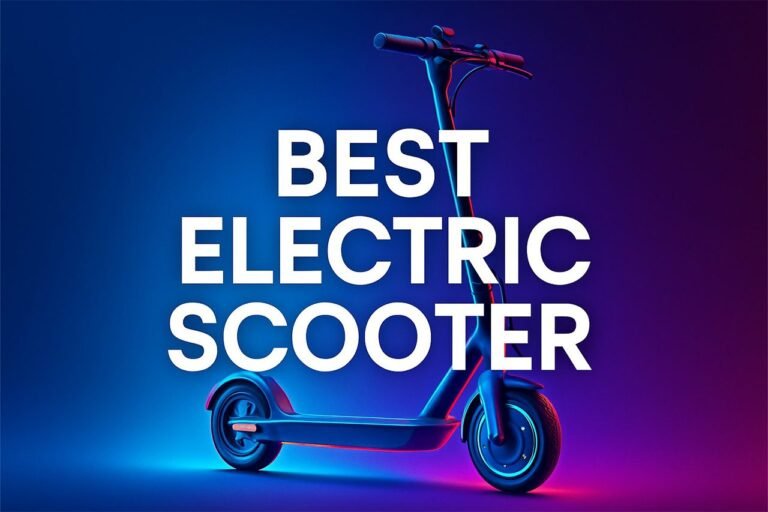
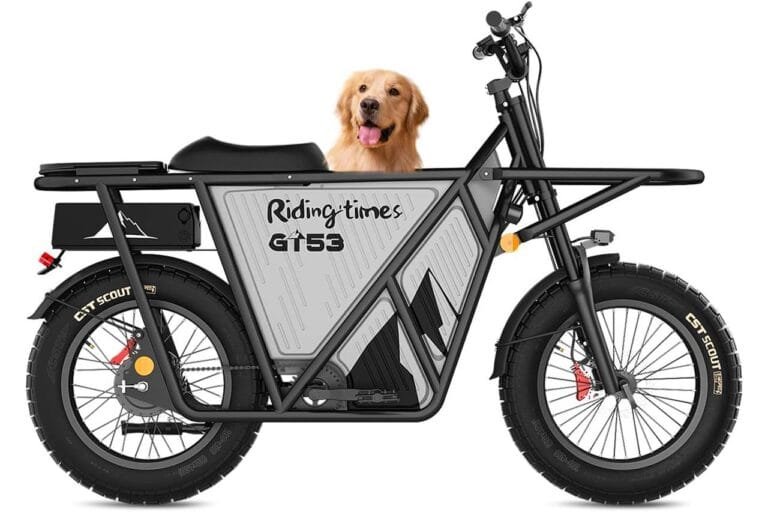
![Is the EGGKING S8 Worth It? Real-World Speed, Range and Ride Quality ([year]) EGGKING S8 Electric Bike Review](https://goebikelife.com/wp-content/uploads/2025/07/EGGKING-S8-E-Bike-Review-768x512.jpg)
